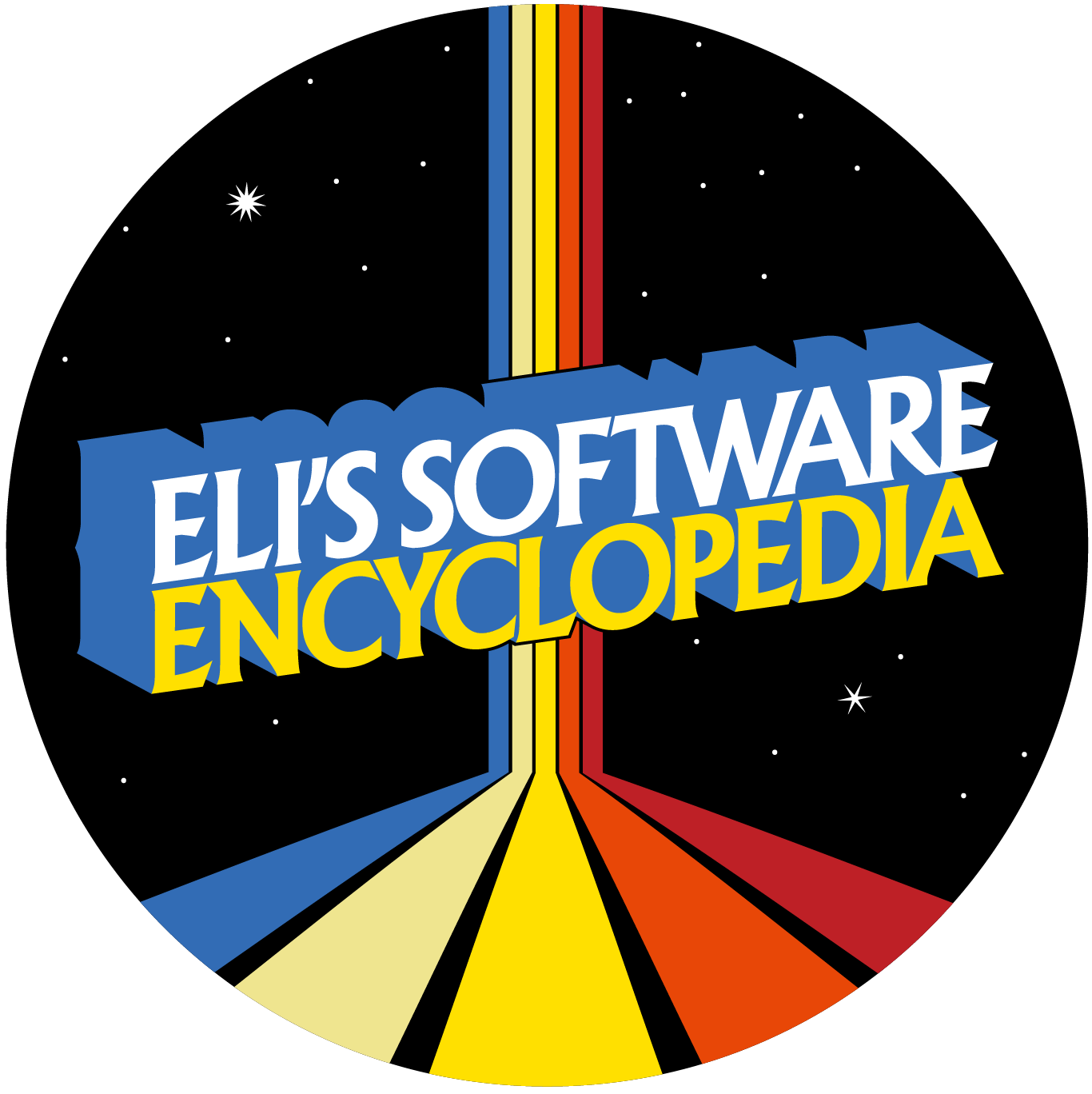LINUX Toolbox (PC, CD-ROM) InfoMagic - 1996 USA, Canada Release
LINUX Toolbox
| |
|---|---|
 | |
| Product ID | 00974-10063 |
| Product UPC | 700974100637 |
| Platform(s) | PC |
| Packaging | Retail Box |
| Media | CD-ROM |
| Copyright date | 1996 |
| Publisher(s) | InfoMagic |
| Category(s) | Operating System, Linux OS |
| Country of Origin | United States of America |
Description from the packaging.
Includes:
- Red Hat 4.0
- Slackware 96
- Debian 1.2.0
- Metro-X Server
- LINUX Developer's Resource CD-ROM set
- Running LINUX book.
LINUX is a Unix-like operating system that can run on the average personal computer. It is a multi-user, multi-tasking UNIX clone for 386 PC's and higher. It includes full TCP/IP networking support, including ftp, telnet, NFS, PPP, SLIP, etc. LINUX can co-exist with other operating systems, such as MS-DOS, Microsoft Windows, or OS/2 on a partitioned hard drive and includes a boot loader that supports direct boot from multiple partitions. Configurations range from 40 MB and up to 200 MB if running X-Windows.
This kit includes:
The LINUX Developer's Resource CD Set.
The most complete CD set available for LINUX enthusiasts. This CD-ROM set is packed with archives of LINUX materials. Includes the LINUX archives from tsx-11.mit.edu and sunsite.unc.edu along with the complete GNU source archive from prep.ai.mit.edu. Includes the following releases: Slackware, RedHat, Debian, JE (includes JF- Japanese FAQ's), Kernel sources, XFree86 (X-Windows). Demos include: BRU, Smartware, Pathfinder, dBMan, Cockpit, Flagship.
Includes a "Quickstart" booklet for setup instructions plus complete on-line documentation from the LINUX Documentation Project, the "Installation & Getting Started Guide" by Matt Welsh, and the "Network Administrator's Guide."
Running LINUX Book.
This 576 page book published by O'Reilly & Associates covers everything you need to know in order to understand, install and run LINUX. This includes an installation tutorial that will lead you through the steps of configuring LINUX on your machine from any distribution. A chapter on UNIX basics, designed especially for LINUX users. System administration and maintenance. Plus info about tools available for the system, including X-Windows, and tools for interfacing with MS-DOS. Network configuration and administration, including TCP/IP, SLIP, UUCP, e-mail, and serial telecommunications. Plus, info for providing network services including World Wide Web server setup.
Basic hardware requirements:
System: RAM: 4MB (8MB recommended), CPU: 386 or above (from 386/SX through Pentium) and compatible processors. Bus: ISA, EISA or PCI and VESA local bus.
Disk: SCSI with supported SCSI controller, IDE, RLL, MFM, ESDI. Hard disk can be shared with other operating systems on separate partitions.
Tape SCSI: Tape with supported SCSI controller, "floppy tape" on floppy controller.
CD-ROM: Andy SCSI CD-ROM with supported SCSI controller, Sony 531, 535, CDU-31A/33A, Mitsumi, IDE (ATAPI) and most SoundBlaster compatible CD-ROMs.
SCSI: Adaptec 1540/1542, 1740 in enhanced mode, 2740, Buslogic, Future Domain 8xx or 16xx, other controllers based on the TMC-950 chip Ultrastor, Adaptec 2840/2940, Always in-2000, Adaptec AIC 6260 chip (151x/152x boards), and Seagate ST01/ST02.
Video: CGA, EGA, VGA or Super VGA, Hercules. For X-Windows: 640 x 480 16-colors for VGA card, 256 colors and resolutions up to 1280 x 1024 (for sufficiently fast hardware) for the following chipsets: S3 801/805/911/924/928/964, 8514, Tseng ET3000/ET4000, Oak oti-067/077/087, Genoa, ATI Mach8/Mach32, Western Digital 90cc00/90cc10/90cc30/90cc31, Trident 8900b/c/cl/cs, Cirrus Logic 5420/5422/5426/62x5, NCR 77c22/77c22e, Compaq AVGA, Hercules monochrome, Diamond Stealth 24/64 and Viper.
Sound: AdLib, SoundBlaster, MediaVision, Fusion and ProAudio Spectrum 16, and compatibles. Installable Gravis UltraSound and MPU-401 drivers are included.
Ethernet: Most standard cards including NE-2000, 3Com and Western Digital/SMC.
LINUX features:
- Multitasking: many programs running at once.
- Multiuser: several users on the same machine via a TCP/IP network.
- Runs in 386 protected mode.
- CD-ROM filesystem which reads all standard formats of CD-ROMs.
- TCP/IP networking, including ftp, telnet, NFS.
- Memory protection between processes, so that one program can't bring the whole system down.
- Demand loads executables: LINUX only reads from disk those parts of a program that are actually used.
- Shared copy-on write pages among binaries.
- Virtual memory using paging (not swapping whole processes) to disk: to a separate partition or a file in the filesystem, or both, with the possibility of adding more swapping areas during runtime. A total of these 128MB swapping areas can be used at once, for a theoretical total of 2GB of useable swap space.
- A unified memory pool for user programs and disk cache (so that all free memory can be used for caching, and the cache can be reduced when running large programs).
- Dynamically linked shared libraries.
- Core dumps for post-mortem analysis, allowing the use of a debugger on a program.
- Mostly compatible with POSIX, System V, and BSD at the source level.
- All source code is available, including the whole kernel and all drivers, the development tools and all user programs.
- 387-emulation in the kernel so that programs don't need to do their own math emulation.
- Support for many national or customized keyboards, and easy to add new ones.
- Multiple virtual consoles: several independent login sessions through the console.
- Supports several common filesystems, including minix-1, Xenix, and all the system V filesystems, and has an advanced filesystem of its own, which offers filesystems of up to 4TB, and names up to 255 characters long.
- Transparent access to MS-DOS partitions (or OS/2 FAT partitions) via a special filesystem: you don't need any special commands to use the MS-DOS partition, it looks just like a normal Unix filesystem.
System Requirements
PC
| |
|---|---|
| Required CPU | 386 |
| Required RAM | 4MB |
| Req. Hard Drive | 40MB Free |
| Recommend RAM | 8MB |
| Rec. Hard Drive | 200 |
| Supported Audio | AdLib SoundBlaster ProAudio Spectrum ProAudio Spectrum 16 Gravis UltraSound MPU-401 General MIDI |
| Supported Video | CGA EGA VGA SVGA Hercules Monochrome |

